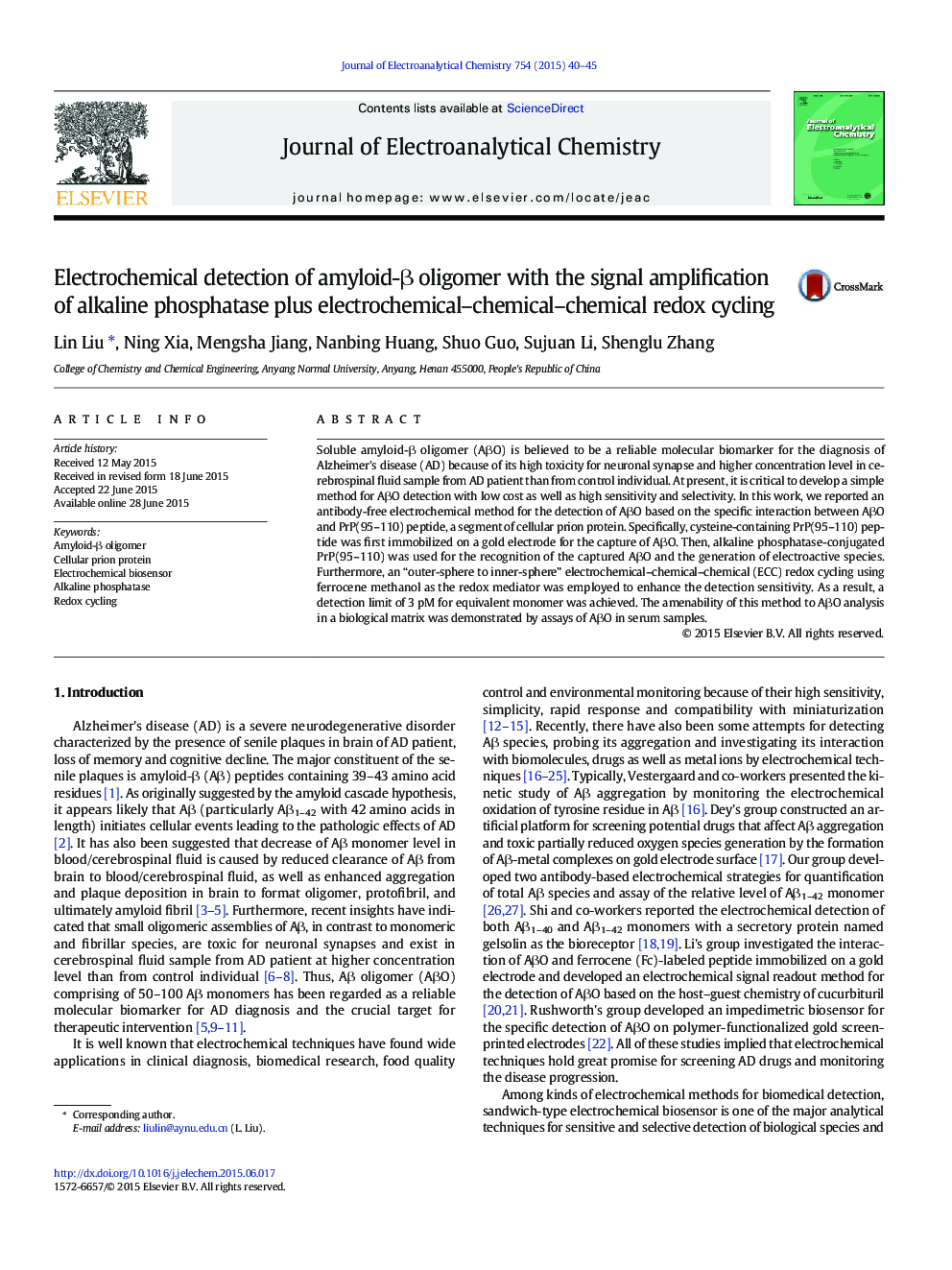| Article ID | Journal | Published Year | Pages | File Type |
|---|---|---|---|---|
| 218175 | Journal of Electroanalytical Chemistry | 2015 | 6 Pages |
•We reported a sandwich-type electrochemical biosensor for the detection of AβO.•PrP(95–110)-containing peptide was used for the capture and recognition of AβO.•The signal was amplified by electrochemical–chemical–chemical redox cycling.•A detection limit of 3 pM was achieved.•This method obviates the use of antibodies, nanomaterials and multi-enzymes.
Soluble amyloid-β oligomer (AβO) is believed to be a reliable molecular biomarker for the diagnosis of Alzheimer's disease (AD) because of its high toxicity for neuronal synapse and higher concentration level in cerebrospinal fluid sample from AD patient than from control individual. At present, it is critical to develop a simple method for AβO detection with low cost as well as high sensitivity and selectivity. In this work, we reported an antibody-free electrochemical method for the detection of AβO based on the specific interaction between AβO and PrP(95–110) peptide, a segment of cellular prion protein. Specifically, cysteine-containing PrP(95–110) peptide was first immobilized on a gold electrode for the capture of AβO. Then, alkaline phosphatase-conjugated PrP(95–110) was used for the recognition of the captured AβO and the generation of electroactive species. Furthermore, an “outer-sphere to inner-sphere” electrochemical–chemical–chemical (ECC) redox cycling using ferrocene methanol as the redox mediator was employed to enhance the detection sensitivity. As a result, a detection limit of 3 pM for equivalent monomer was achieved. The amenability of this method to AβO analysis in a biological matrix was demonstrated by assays of AβO in serum samples.
